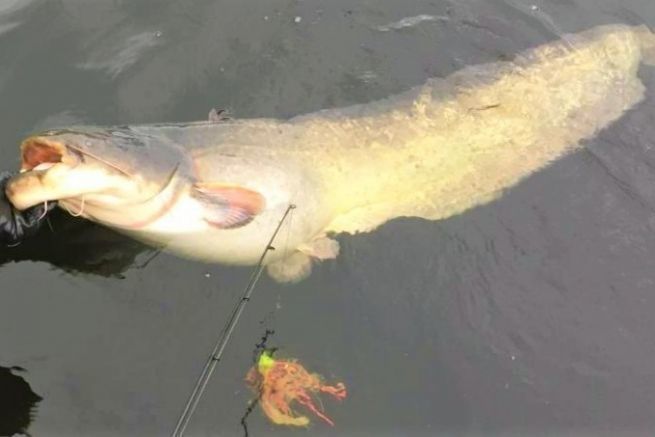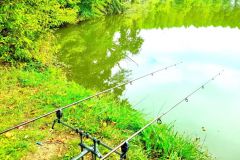The clonk, a noisy traveler
Originally from the Danube and Volga valleys, the clonk's real name is boutshka. It is in 1994, that Fabien Monvoisin, fishing guide graduated MNPE (national house of fishing and water) and specialist of the catfish imported and democratized the fishing of the catfish in France.
The clonk can be made of different materials such as wood, aluminum, carbon, plastic or resin.
When you hit it on the surface of the water with skill, it emits a particular sound which is intended to make the catfish take off towards the line's mounting.
This sound only influences the catfish, but to this day we still don't know anything about what the fish feel and why they react to it.

A whole range of sounds
There are several types of clonks that sound different from each other. These clonks are to be used according to the depth of your fishing sector. We will distinguish five types for different uses.
- Semi-spherical bulging clonks that are used in all depths. They are the most common.
- The clonks tubes, these are perfect for beginners and easy to use. They can be used at any depth.
- Ergonomic flat or semi-spherical clonks. They are also easy to use and allow you to explore all depths.
- The flat clonks are very efficient in shallow water. Generally, they are used in less than 6 meters of water.
- Concave clonks are the specialists of great depths between 5 and 20 meters, and more.

The clonk, a technique to master
The technique can be acquired more or less quickly depending on the dexterity of the fishermen. It consists of a rotation movement of the arm or wrist, back and forth on the surface of the water. To practice, place yourself on a pontoon, or from your boat or in your pool or bathtub.
The gesture is not easy at first. It consists of pushing an air bubble under the water film with the clonk and pulling it out. This will cause the characteristic resonating sound that every catfish fisherman knows.
Nevertheless, it is possible to obtain different sounds with the same clonk. Long, sweeping strokes with the forearm will give a low sound, while sharp strokes with the wrist will give a higher sound.
A tool to be used with care
The clonk is to be used with intelligence. Depending on the time and place, catfish will be more wary of it than attracted to it. Remember that catfish are intelligent fish.
Individuals already fished or just stung will remember for a long time the characteristic noise of the clonk and its tone used. I strongly advise you to change your clonk to approach catfish again on already fished areas.
Be careful also, with the legality of use of this one. In some departments or AAPPMA, the use of clonk is prohibited. It is therefore preferable to get information from the fishing federation of the department you are fishing.

 /
/ 














